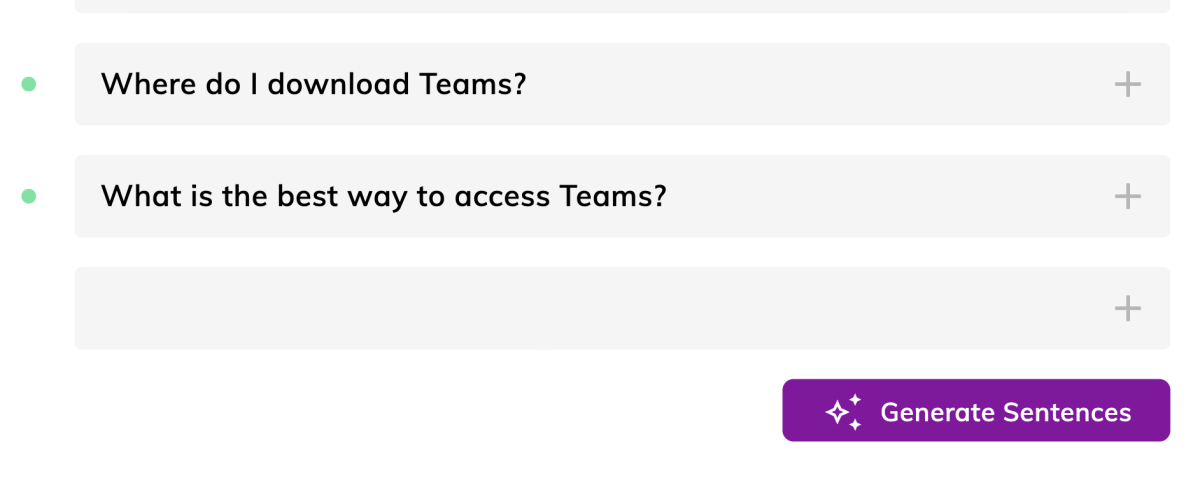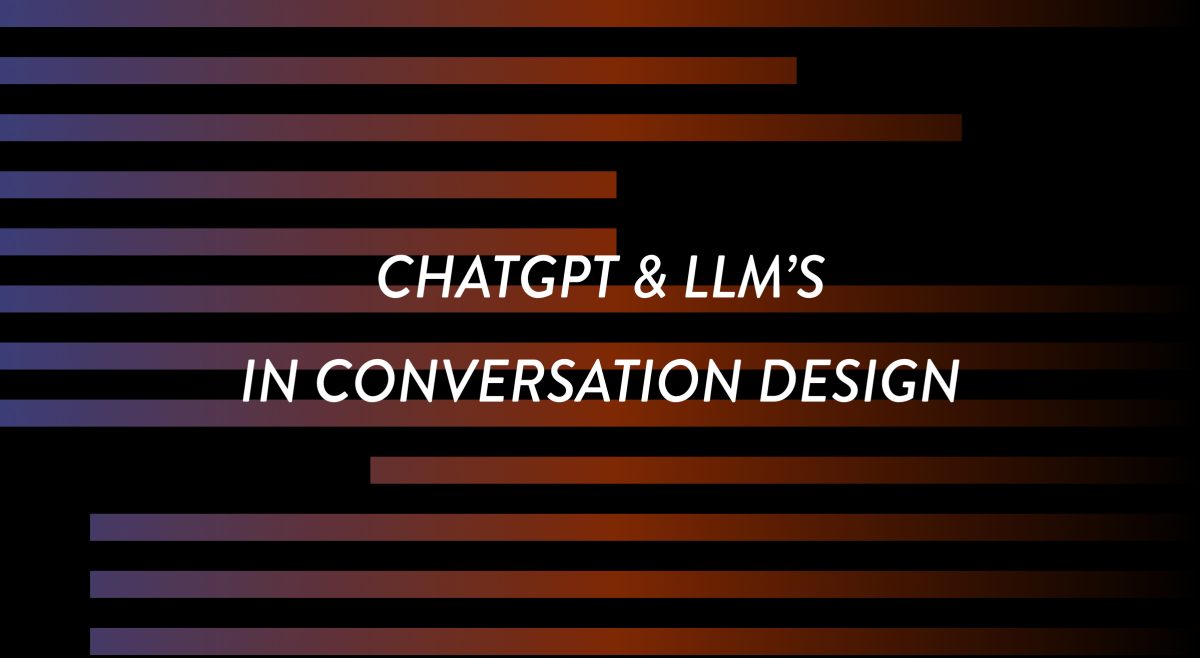Firstly, what are LLMs and ChatGPT? This is not an article about what LLMs (or large language models) and ChatGPT are. If you have been living under a rock and are unfamiliar with these names and terminology then this article written by ChatGPT explaining itself should be a good starting point.
We have been receiving questions from – and participated in many discussions with – our customers and peers about this exciting new tech and wanted to clarify our stance on where we see the opportunities and weaknesses at the current stage, as well as looking forward to a potential hybridized future. The biggest talking point has been the need for conversation design in an increasingly automated and generative world.
From our perspective as experts on conversational interfaces and conversation design we see predominantly two paths that this technology and trend will continue to develop on: the path of consumer-facing applications and the path of the technology as a tool and force multiplier. Neither of which will be eliminating the need for humans behind the wheel, steering the technology, anytime soon.
Hopping on the LLM bandwagon.
Broadly speaking, this technology and its implications are spreading at breakneck speed. Many platforms are currently aiming at capitalizing on this goldrush-like state. You may have heard of Microsoft implementing ChatGPT in Bing and Google looking at fusing their proprietary equivalent LaMDa with their own search engine. These search engines follow a trend that companies such as SoundHound have been pursuing for a while, responding to users not in lists of search results, but in concrete answers in the form of natural language.

Other examples of quick wins in this brand new space are bot platforms such as Voiceflow and Cognigy.AI. Here the same purpose of applying LLMs to dynamically generate the system responses or predictable training data for intent training is being used heavily. Some platforms, like Cognigy.AI, are also considering going a step further and looking into the empowerment of conversation designers by allowing the creation of flows and elements through natural language prompts, speeding up the process of setting up new conversations greatly and thus contributing to rapid prototyping capabilities of these low-code platforms. Will these features collate into conversations that are production-ready, about to be rolled out to millions of users, out-of-the-box? Of course not. But they provide a good first framework to expand upon.
Trust in the system and the tech is dwindling.
Widely broadcasted anecdotes of tech journalists and influencers, as well as hear-say from colleagues and friends have recently lead to a lot of skepticism when it comes to the current state of the technology. Articles quoting the unsettling feeling, individual erroneous responses and behavioral patterns reinforce negative connotations when it comes to LLMs in todays world. This obviously has a huge negative impact on consumer-facing applications.
Finding an appropriate place for LLMs should not be difficult.
Focusing on this new technology as a force multiplies and enablement tool, is therefore the more stable path from our perspective. At least while the technology matures and new, more refreshing experiences for consumer-facing applications improve the publics perception in the mid-term.
On a more immediate and applied note, ChatGPT and LLMs are a great vehicle for innovation and a popular driver for change, but they are tools and will not replace human experts in conversation design. It is a good gap-filler and repetitive tasks but it will not provide the confidence and accuracy of dialogues designed by humans for a while.
The conversation designer is still the agent of change for this new tech.
Our workflows in the future could consist of conversation designers laying down the structure of a dialogue, such as the starting point, the goal of the conversation and some checkpoints along the way, with the generative AI or LLM filling the gaps.
In an ideal world we would provide the AI with a purpose and a personality, but no actual dialogue would need to be written by humans. The conversation designer would be focused entirely on the strategic purpose of the interface and the decision on a vector of the personality and tone of voice of the bot.
Paul Krizsan, Director Conversational AI
So while remaining up to date with the current developments of this exciting new technology is vital, we do not share the current ubiquitous sentiment that users are ready for unfettered access to potentially image-harming experiences without having some of the kinks of current LLMs ironed out over the course of 2023.
